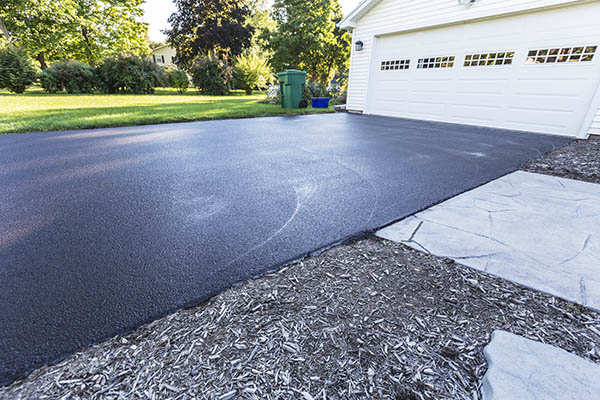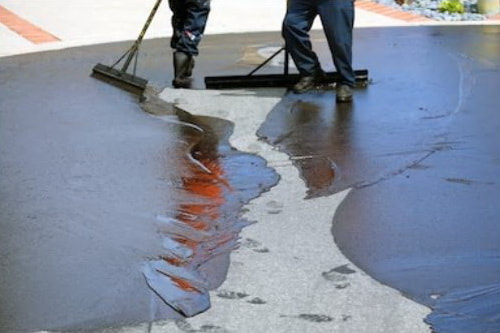Cold Mix Asphalt Vs. Hot Mix Asphalt: Which Is Right for You?

Composition Differences
Cold mix and warm mix asphalts differ substantially in their make-up, with distinct features that impact their efficiency and applications. Cold mix asphalt is created by emulsifying the asphalt binder with water and an emulsifying representative before blending it with aggregate. This technique permits the asphalt to be convenient at reduced temperature levels, making it excellent for short-lived repair work and for usage in chillier weather problems. Hot mix asphalt, on the other hand, is manufactured at heats, typically between 300-350 ° F, which helps to attain far better compaction and a much more long lasting end product. The warm mix asphalt production process includes warming the aggregate and asphalt binder independently prior to combining them at the asphalt plant.
Furthermore, cool mix asphalt tends to be much less thick and extra versatile than hot mix asphalt. This adaptability makes it better matched for locations with higher degrees of activity, such as driveways or roads with rush hour. On the other hand, warm mix asphalt is known for its high toughness and resistance to rutting and fracturing, making it a recommended selection for highways and high-traffic roads where long life is important.
Installation Refine Differences
The process of installing chilly mix and hot mix asphalt exhibits remarkable variations in their procedures and requirements. Cold mix asphalt, being a more versatile material, can be used straight from the bag or container onto the crater or harmed location. It needs minimal preparation job, such as cleaning up the area and compacting the chilly blend with hand devices. This makes it a convenient option for short-term and quick solutions. In comparison, hot mix asphalt requires a much more elaborate setup process. It involves warming the mixture to heats prior to laying it down on an appropriately ready base. The preparation includes compacting the base, applying a tack layer, and utilizing heavy machinery like pavers and compactors for a long lasting and smooth coating. Due to the home heating needs, hot mix asphalt installations are commonly executed by experts with specialized tools, ensuring a more structurally audio and long-term outcome.
Resilience and Durability Elements
When thinking about asphalt choices, toughness and longevity are critical variables to evaluate for lasting sidewalk performance. Warm mix asphalt (HMA) is understood for its remarkable durability and long life. The heats throughout the laying and mixing process enable far better compaction, causing a denser and stronger pavement framework. This causes HMA being much more resistant to hefty traffic tons, harsh climate condition, and the impacts of aging compared to chilly mix asphalt (CMA)
In terms of durability, HMA commonly surpasses CMA because of its premium toughness and resistance residential properties. HMA pavements have a longer life span, requiring much less regular fixings and maintenance, which can equate to cost financial savings over time. Furthermore, HMA pavements are much more easily customizable to satisfy particular project requirements, additionally improving their toughness.
Expense Considerations
Taking into consideration the financial effects is a vital aspect when reviewing the choice in between warm mix asphalt (HMA) and cold mix asphalt (CMA) for pavement tasks. While the first cost of hot mix asphalt is normally higher than that of cool mix asphalt, HMA typically supplies a more cost-effective solution over time due to its premium resilience and longevity. HMA is recognized for its ability to withstand rush hour tons and harsh climate condition, lowering the need for regular repair services and maintenance. On the various other hand, cool mix asphalt is extra affordable ahead of time however may need even more regular patching and resurfacing, leading to greater maintenance costs in time.
In enhancement to product expenses, it's necessary to take into consideration the expenditures connected with installation and upkeep when comparing HMA and CMA. HMA typically requires specific tools and skilled labor for appropriate installment, which can influence overall job costs. Alternatively, CMA is easier to collaborate with and can typically be applied using simpler techniques, potentially decreasing installment expenses. Inevitably, the decision between HMA and CMA need to take into consideration not simply the initial cost however additionally the long-term financial ramifications to establish the most cost-efficient option for the particular pavement job.
Environmental Influence Contrast
Comparison of the ecological impacts in between hot mix asphalt (HMA) and chilly mix asphalt read here (CMA) discloses distinct distinctions in sustainability practices. HMA production requires heats, leading to raised energy intake and greenhouse gas exhausts. The process also releases unpredictable organic compounds (VOCs) and dangerous air pollutants (HAPs) into the atmosphere. On the other hand, CMA is created and applied at lower temperature levels, lowering energy use and exhausts dramatically. The lower production temperatures of CMA result in decreased gas intake and lower levels of carbon dioxide emissions, making it a more ecologically friendly option.
Additionally, the use of CMA frequently includes find out reusing existing asphalt pavement, promoting source preservation and lowering the quantity of waste sent out to garbage dumps. This recycling element even more enhances the sustainability of CMA compared to HMA. Overall, when considering the environmental effect, CMA arises as a more eco lasting option as a result of its lower energy demands, reduced emissions, and the potential for reusing existing materials. By selecting CMA over HMA, road building projects can add favorably to ecological conservation efforts.
Final Thought
Finally, the selection in between cool mix asphalt (CMA) and hot mix asphalt (HMA) relies on numerous factors such as composition, installation process, sturdiness, long life, cost, and ecological effect. angle parking. While CMA provides a economical and fast option for small repairs, HMA makes certain exceptional longevity and longevity for heavy web traffic locations. Take into consideration these factors thoroughly to figure out which sort of asphalt is the appropriate choice for your paving needs

Taking into consideration the financial ramifications is an essential element when evaluating the option in between hot mix asphalt (HMA) and chilly mix asphalt (CMA) for sidewalk tasks. While the initial expense of warm mix asphalt is generally greater go to these guys than that of cool mix asphalt, HMA frequently supplies an extra cost-effective service in the lengthy run due to its premium resilience and durability. asphalt repair.Comparison of the environmental effects in between warm mix asphalt (HMA) and cool mix asphalt (CMA) reveals distinct differences in sustainability methods.In final thought, the selection in between cool mix asphalt (CMA) and warm mix asphalt (HMA) depends on numerous factors such as composition, setup process, toughness, long life, expense, and environmental influence